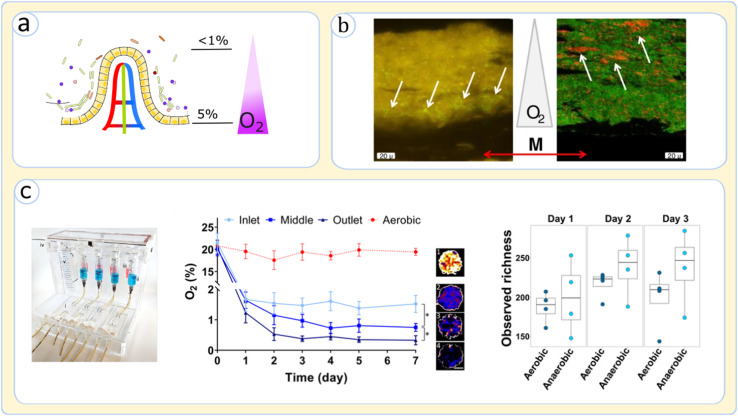FIG. 6.
Effects of oxygenation control in gut-on-a-chip devices. (a) Oxygen gradient across the lumen-mucosa axis on a villus. The oxygen concentrations values are based on Singhal et al.75 (b) Effect of oxic conditions on the gut biofilm structure explored in HMI gut-on-a-chip by fluorescence in situ hybridization microscopy; (left) F. prausnitzii bacteria, marked with white arrows, have some tolerance to oxygen and tend to crowd in the lower side of the mucus layer; (right) bifidobacterium spp., as a strict anaerobe, marked by white arrows, is prominently observed at the upper side of the biofilm and the mucus layer (M shows the location of the membrane and mucus layer). Adapted from Marzorati et al., BMC Microbiol. 14, 133 (2014). Copyright 2014 Authors, licensed under a Creative Commons Attribution (CC BY) license.86 (c) The setup for the creation of an anaerobic environment in the Emulate gut-on-a-chip; (left) both the device and the culture for the epithelial channel are housed in an anaerobic atmosphere; (middle) the concentration of oxygen measured at the inlet, middle, and outlet of the epithelium-harboring channel after 7 days of culture; the in vivo oxygen concentration is almost achieved; (right) anaerobic culture of human stool samples creates a richer bacterial population than the aerobic condition. Adapted with permission from Jalili-Firoozinezhad et al., Nat. Biomed. Eng. 3(7), 520 (2019). Copyright 2019 Springer Nature55 (the image of the setup was obtained from the supplementary information of the article).

